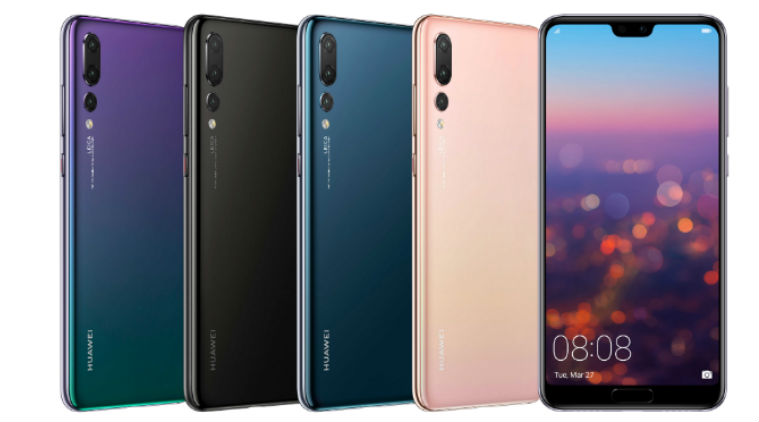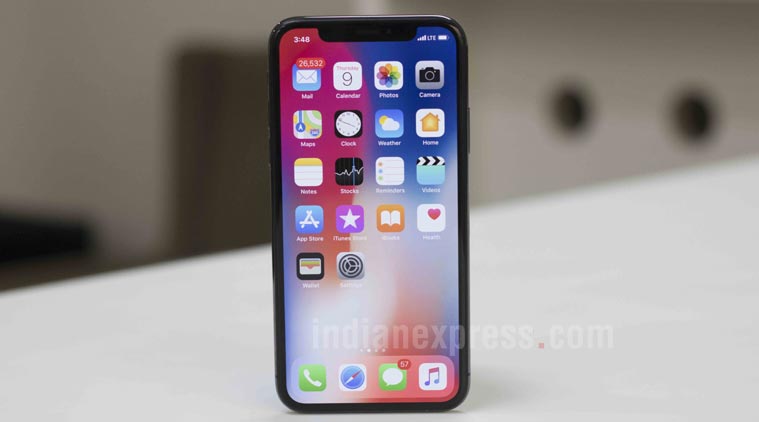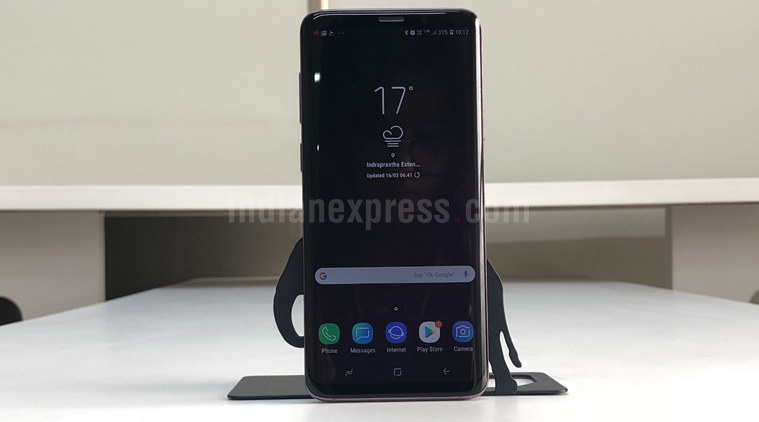Chinese smartphone manufacturer Huawei has launched the P20 Pro, the company’s flagship smartphone of 2018, at a dedicated event held in Paris. The device has an intriguing glass-backed design and the camera, which is designed to deliver a professional-grade experience on a smartphone. Huawei is looking to up the game with the P20 Pro, but the premium Android smartphone has to compete with Apple’s iPhone X and Samsung’s Galaxy S9 Plus. Then there is the Pixel 2 XL, which is arguably known for its camera and clean software.
Each device has its own strengths and weaknesses in different areas. But how does Huawei’s flagship smartphone stack up against the iPhone X, Galaxy S9 Plus, and Pixel 2 XL? Here’s a quick comparison between the four flagship smartphones on the basis of specifications, features, and price.

Huawei P20 Pro vs iPhone X vs Galaxy S9 Plus vs Pixel 2 XL: Design
Huawei P20 Pro has a glass back and a metal frame, similar to the Galaxy S9 Plus. But there are some major differences between the two devices. The P20 Pro has a “notch’ above the screen, whereas the Galaxy S9 doesn’t, though let me tell you that both the phones have minimal bezels. Another notable difference is that the Galaxy S9 Plus has a headphone jack, while the Huawei P20 Pro doesn’t. Plus, of course, both the phones also look different in terms of looks. Huawei P20 Pro comes in Twilight, Pink Gold, Black, and Midnight Blue colour shades. The Galaxy S9 Plus, on the other hand, is available in Midnight Black, Coral Blue and Lilac Purple. They’re also water and dust resistant.
 The iPhone X has a modern and eye-catching design, thanks to its stainless-steel body and glass back.
The iPhone X has a modern and eye-catching design, thanks to its stainless-steel body and glass back.
The iPhone X has a modern and eye-catching design, thanks to its stainless-steel body and glass back. The device does look premium in hands and there’s no doubt about it. Many people don’t like a notch above the screen – but the truth is that the most annoying feature is the talk of the town. A slew of smartphones have been recently introduced with the notch design like that in the iPhone X. Another missing feature from the iPhone X is the lack of a 3.5mm headphone jack. Even Google has ditched the headphone jack from the Pixel 2 XL and instead features a USB-C audio port. Apple iPhone X can be purchased in either White or Space Grey colour variants.
Like the original Pixel XL, Google Pixel 2 XL continues to feature half glass, half metal design. It still has rounded corners and edges that wrap around the phone, surrounded by the front display. The phone is comfortable in the hand, despite having a full-screen display.
Huawei P20 Pro vs iPhone X vs Galaxy S9 Plus vs Pixel 2 XL: Display
Huawei P20 Pro has a 6.1-inch OLED display with a resolution of 1080 x 2240 pixels and an aspect ratio of 18:7:9. Samsung Galaxy S9 Plus has a 6.2-inch Super AMOLED display with a resolution of 1440 x 2960 pixels and an aspect ratio of 18:5:9. Apple iPhone X has a 5.8-inch OLED display with a resolution of 2436 x 1125 pixels and an aspect ratio of 19:9. Google Pixel 2 XL has a 6-inch p-OLED display with a resolution of 2880 x 1440 and an aspect ratio of 18:9. All four smartphones have tall displays with minimal bezels.
 Samsung Galaxy S9 Plus has a 6.2-inch Super AMOLED display with a resolution of 1440 x 2960 pixels.
Samsung Galaxy S9 Plus has a 6.2-inch Super AMOLED display with a resolution of 1440 x 2960 pixels.
Huawei P20 Pro vs iPhone X vs Galaxy S9 Plus vs Pixel 2 XL: Hardware and software
Huawei P20 Pro gets an octa-core Kirin 970 processor under the hood. It is further backed by 6GB RAM, 128GB storage anda microSD support. The Kirin 970 chipset is not only fast but has built-in AI (Artificial Intelligence) computing capabilities. Samsung Galaxy S9 Plus uses either a Snapdragon 845 or an Exynos 9810 processors depending upon the region. In India, Samsung is selling the Galaxy S9 Plus with an Exynos 9810 chipset. The Galaxy S9 Plus also has 6GB RAM and either 64 or 128GB storage. A microSD card support is also included.
Story continues below this ad
The iPhone X is powered by the A11 Bionic chipset. Apple claims the A11 Bionic chipset is 25 per cent faster than the A10 chipset found inside the iPhone 7 and iPhone 7 Plus. The iPhone X comes with 3GB RAM, though the RAM size is less compared to other flagship smartphones available on the market. The device is available in 64GB, 128GB and 256GB storage capacities. Apple iPhone X runs the company’s proprietary iOS mobile operating system. Google Pixel 2 XL is powered by the Snapdragon 835 processor coupled with 4GB RAM. It can be purchased in either 64GB or 128GB storage capacities. However, a microSD card slot is missing. The Pixel 2 XL, along with the P20 Pro and Galaxy S9 run on Google’s Android mobile OS.
 Google Pixel 2 XL is powered by a Snapdragon 835 processor coupled with 4GB RAM.
Google Pixel 2 XL is powered by a Snapdragon 835 processor coupled with 4GB RAM.
Huawei P20 Pro vs iPhone X vs Galaxy S9 Plus vs Pixel 2 XL: Camera
Huawei P20 Pro has three cameras on the back. You get a 40MP RGB sensor, 20MP f/1.6 monochrome lens, and an 8MP f/2.4 telephoto lens. The company says the P20 Pro’s telephoto lens offers up to 3x optical zoom (and up to 5x “hybrid zoom”). The phone has a 24MP front-facing camera for taking selfies.
Samsung Galaxy S9 Plus has a pair of 12MP dual cameras, one of which offers a variable aperture that can switch between f/1.5 and f/2.4. On the front, you get an 8MP snapper with autofocus, while the P20 Pro has a 24MP front-facing camera. Apple iPhone X also offers dual 12MP shooters, with the wide-angle lens having f/1.8 aperture and the telephoto lens with f/2.4 aperture. Both support optical image stabilization (OIS).
Google Pixel 2 XL meanwhile, has a single 12.2MP sensor coupled with a f/1.8 aperture lens. It manages to outclass many camera-centric smartphones with its single shooter. There’s an 8MP camera on the front.
Story continues below this ad
Huawei P20 Pro vs iPhone X vs Galaxy S9 Plus vs Pixel 2 XL: Battery and wireless charging
Huawei P20 Pro has a 4000mAh battery with support for fast charging. It is a bit strange to see that the smartphone does not come with fast charging support. Samsung Galaxy S9 Plus opts for a 3500mAh battery and the support for wireless charging is included. The iPhone X has a 2716mAh battery, which should last a day on a single charge. Yes, it does support wireless charging. The Pixel 2 XL’s 3520mAh battery provides long backup. Sadly, the Pixel 2 XL doesn’t support wireless charging.
Huawei P20 Pro vs iPhone X vs Galaxy S9 Plus vs Pixel 2 XL: Fingerprint scanner
Huawei has a conventional fingerprint scanner that is located on the front. The P20 Pro is the first P-series smartphone to feature a Face Unlock feature (2D-based) that is said to unlock the device in 0.5 seconds. Samsung Galaxy S9 Plus also features a fingerprint scanner that can be found on the back of the device. Samsung also added a feature called Intelligent Scan that combines both facial and iris scans.
In case of the iPhone X, Apple dropped the fingerprint scanner support from the device. Instead, it uses a new type of facial recognition technology called the Face ID. Face ID uses iPhone X’s TrueDepth selfie camera to analyse over 30,000 “invisible dots” on the face to create a 3D image. Apple claims Face ID is more secure than the Touch ID. Meanwhile, Google Pixel 2 XL supports both facial and fingerprint recognition.
Huawei P20 Pro vs iPhone X vs Galaxy S9 Plus vs Pixel 2 XL: Price and availability
Huawei P20 Pro is priced at Eur 899 (or approx Rs 72, 660) for 6GB RAM and 128GB storage. Huawei will start selling the P2o Pro in Europe from April 6. Price and availability details of the Huawei P20 Pro has not been confirmed for the Indian market just yet. Samsung Galaxy S9 Plus is priced at Rs 64,900 (64GB), Rs 68,900 (128GB), and Rs 72,900 (256GB). Apple iPhone X is priced at Rs 95,390 (64GB) and Rs 108,930 (256GB) in the Indian market. Lastly, Pixel 2 XL is priced at Rs 73,000 (64GB) and Rs 82,000 (128GB).

 Huawei P20 Pro vs iPhone X vs Galaxy S9 Plus vs Pixel 2 XL: Price, specifications, features, and more
Huawei P20 Pro vs iPhone X vs Galaxy S9 Plus vs Pixel 2 XL: Price, specifications, features, and more
 The iPhone X has a modern and eye-catching design, thanks to its stainless-steel body and glass back.
The iPhone X has a modern and eye-catching design, thanks to its stainless-steel body and glass back. Samsung Galaxy S9 Plus has a 6.2-inch Super AMOLED display with a resolution of 1440 x 2960 pixels.
Samsung Galaxy S9 Plus has a 6.2-inch Super AMOLED display with a resolution of 1440 x 2960 pixels.





